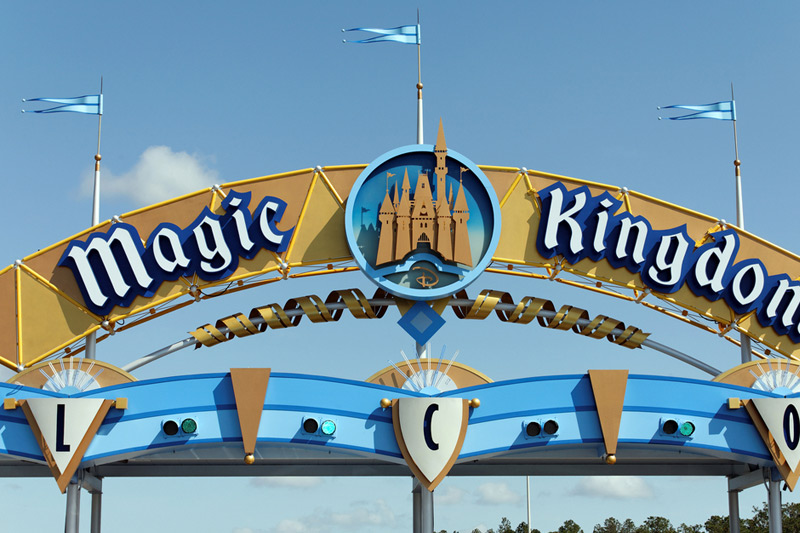By Dawn Chmielewski and Lisa Richwine
LOS ANGELES (Reuters) -Walt Disney (NYSE:) shares rose Thursday after the entertainment giant reported quarterly earnings that beat Wall Street estimates and provided robust guidance for the coming years.
The company forecast fiscal 2025 adjusted earnings per share percentage growth in the high single digits, even with capital expenditures of roughly $8 billion. The company also said it expects to repurchase $3 billion worth of stock. Disney forecasts double-digit earnings per share growth in fiscal 2026 and 2027 as its investments in theme parks, its cruise ship fleet and streaming pay dividends.
“We think it’s appropriate that we give you a multi-year perspective because these investments are clearly multi-year in nature,” CFO Hugh Johnston told investors. “In terms of our confidence in delivering results, we’re obviously confident. Otherwise we wouldn’t be doing it.”
Disney’s shares rose 10.2% to $113.17, the highest share price in six months.
“While Disney typically does not issue long-term guidance, this earnings report was marked by an optimistic outlook for 2027,” said Paul Verna, vice president of Emarketer. “Investors welcomed the results.”
The entertainment giant’s recent success in movie theaters helped offset the decline in operating income at the company’s Experiences and Sports divisions. Lower attendance at international locations has hurt theme park results, and higher programming and production costs have hurt ESPN.
Disney reported adjusted earnings per share of $1.14 for the fiscal fourth quarter ended in September. That compares with consensus estimates of $1.10 per share, according to analysts polled by LSEG.
Revenue was $22.6 billion, slightly ahead of Wall Street forecasts of $22.45 billion. Operating income rose 23% from a year earlier to nearly $3.7 billion.
‘WELL POSITIONED FOR GROWTH’
Chief Executive Bob Iger, who returned to the company after retiring in November 2022, implemented aggressive cost cuts and worked to revive the company’s film and TV units after a period of failures.
“We have gone through a period of significant challenge and disruption,” Iger told investors. “We are well positioned for growth.”
Disney said last month it would appoint a new chief in early 2026. The new boss would replace Iger, who returned to the company to take the top job after the board fired its hand-picked CEO.
While peers like Warner Bros Discovery (NASDAQ:) CEO David Zaslav predicted that the incoming Trump administration would usher in a wave of media consolidation, Iger said Disney doesn’t need to make more deals to strengthen its portfolio. The 21st Century Fox acquisition in 2019 brought with it a collection of assets that fueled Disney’s record number of Emmy Awards, the hit “Avatar” film franchise and control of the Hulu streaming service.
“We are already consolidated in many ways,” Iger said. “We don’t really need more resources at this point, either from a distribution or content perspective, to thrive in a basically disruptive media world.”
Johnston said Disney similarly considered and then rejected divesting its television assets, as Comcast (NASDAQ:) said it is currently considering.
“When I went through the math … it became pretty clear to me that there was no evaluation opportunity for Disney,” Johnston said. “I can’t talk to other companies.”
Operating income for the Entertainment unit, which includes film, television and streaming, more than doubled in the quarter to $1.1 billion, driven by the return of Hulu’s Emmy-nominated comedy “Only Murders in the Building” and summer films including ‘Deadpool & Wolverine’. ‘, the first R-rated Marvel film, and ‘Alien: Romulus’.
The movie “Deadpool” grossed $1.3 billion worldwide. Along with Disney’s other summer blockbuster, “Inside Out 2,” the sequels also boosted ratings on the Disney+ service as consumers watched previous installments of the films, and generated more licensing and other revenue.
Disney’s flagship streaming video service, Disney+, had more than 122.7 million subscribers outside India, up 4.4 million from the previous quarter. The company intensified efforts to tackle password sharing in September.
Disney+, Hulu and ESPN+ generated operating profit of $321 million for the quarter, marking the streaming services’ second consecutive quarter of profitability.
The streaming gains helped offset a 38% decline in operating income for Disney’s traditional television networks.
Iger said Disney would add an ESPN Tile to its Disney+ streaming service on Dec. 4 as it prepares to launch the flagship sports network next fall. It offers live sports and commentary, as well as new features such as sports betting. In the future, it could even use artificial intelligence to customize the viewing experience and offer a personalized version of SportsCenter, he said.
“It will be designed to serve consumers in the most compelling way ESPN has ever served consumers,” Iger said.
At Disney’s Experiences, which includes parks and consumer products, operating income fell 6% to $1.66 billion.
The company reported a 32% decline in operating income at international parks, due to the costs of building new attractions and competition in Paris after the Olympics.
At the Sports unit, which includes the ESPN Network and Star India, operating profit fell 5% to $929 million. ESPN faced higher programming and production costs for college football broadcasts. For the full year, domestic operating revenues are 6% ahead of 2023, with performance boosted by double-digit advertising revenue growth.

In addition to the fiscal year 2025 projection, Disney expects double-digit adjusted earnings per share in fiscal years 2026 and 2027.
“When you put it all together, our strategies are working, very well, and we have a good view of where these strategies are likely to take us,” Johnston said in an interview.


